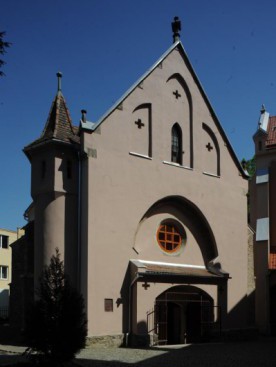Saint Martin’s Chapel –MukacheveInitially, Mukacheve was the fortress defending the royal forest of Bereg. The settlement became a market town (oppidum) in the 15th century; and by the turn of the 15th and 16th centuries, it evolved to a township equalling Beregszász in size and importance. Its church was mentioned for the first time in a register on the Papal Tenth in the first half of the 14th century. This oriented church had a single, rectangular nave. A square-based tower built in the Middle Ages was connected to the nave and a small chapel was located on its northern side. The entrance to the sacristy with its lintel supported by a canopy on each side has been preserved inside the sanctuary, at the western end of its northern wall. One can also see the tabernacle made of stone and having carved surfaces. In the eastern part of the southern wall, one can see a sedilia subdivided into three parts. A lattice vault supported by canopies covers the sanctuary. The canopies in the four eastern corners have a pyramidal shape and their sides are covered with blind tracery decorations. Such a solution for the lattice vault covering the sanctuary could have not been adopted before the mid-15th century. Furthermore, one might suspect that the sanctuary suffered modifications roughly between 1470 and 1500, or in the first half of the 16th century. Taking into account the presence of the coat of arms belonging to the Büdi family, the sanctuary obtained its present form in the second quarter of the 16th century. |















